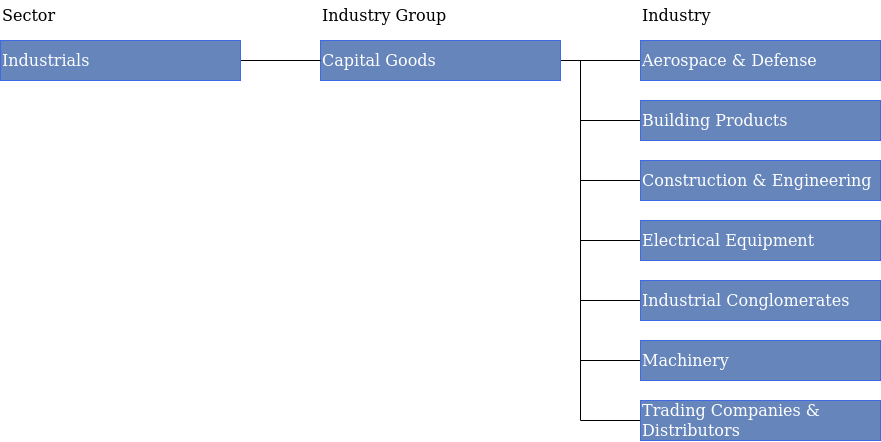Capital goods play an essential role in the economy to produce consumer products. Businesses shipped more than $300 billion of durable goods in June 2023. With this record number in mind, let’s explore what capital goods are. This article discusses several types, examples, and companies in the industry.
What are capital goods?
Capital goods are durable products, such as machinery, used to produce consumer products and services. In essence, capital goods are the backbone of the production industry. They are considered in many tangible, long-lasting assets businesses use to manufacture goods or provide services. These are the two types of capital goods.
Capital goods are not final products, unlike consumer goods intended for direct consumption. Instead, they are used in the creation of end products for consumers.
Company investment
Companies need tools and equipment to produce consumer goods – accountancy of the firm places the tools and equipment under Plant, Property & Equipment on the balance sheet. Companies generally try to hold off on investing in gear as long as possible. When management orders to spend capital on tools and equipment, investors may expect growth within the company or market. The money spent on capital goods is referred to as capital expenditures, found on the cash flow statement.
What industries are in the capital goods field?
MSCI and Standard & Poor’s developed the Global Industry Classification Standard (GICS) for categorizing all major public companies. The classification standard consists of 11 sectors and 25 industry groups. The industry groups are further divided into industries and sub-industries. Capital goods is an industry group of the industrial sectors. The industrial sector comprises 1278 American public companies, of which 711 are in the capital goods group.

The figure overviews the capital goods industry group and further classifications. The capital goods industry group is divided into seven industries:
Aerospace & Defense: 100 companies in this category manufacture equipment, parts, and products for civil or military aerospace or defense.
Building Products: This industry has 59 companies focusing on manufacturing home improvement products and equipment and building components.
Construction & Engineering: 66 civil engineering companies, large-scale contractors, and other companies engaged primarily in non-residential construction.
Electrical Equipment: This industry contains 169 companies divided into two sub-industries: Electrical components and equipment and Heavy Electrical Equipment. The former companies focus on producing electrical cables, wires, components, and equipment. The latter are manufacturers developing power-generating equipment, including power turbines and heavy electrical equipment.
Industrial Conglomerates: This industry is by far the smallest in the group, with only 22 companies. These companies have business activities in three or more sectors where none of the revenues contribute to the majority of the company.
Machinery: This industry consists of three sub-industries: Industrial Machinery, Agricultural and farm Industry, and Construction Machinery and Heavy Trucks. With 222 companies in the Machinery industry, it is the largest. They manufacture machine tools, escalators, elevators, tractors, fertilizing machinery, earth-moving and construction equipment, heavy-duty trucks, and more.
Trading Companies & Distributors: 74 companies deal with or distribute industrial products and equipment.
Examples of capital goods
According to the American stock exchanges, there are 711 public companies. For every sub-industry discussed above, we will provide one or more examples of capital goods and their company:
Aerospace & Defense: common names are The Boeing Company (BA), Lockheed Martin Corporation (LMT), or Virgin Galactic Holdings (SPCE). They produce planes for aviation, space, and defense. Aviation needs the aircraft to provide a service of transport. Smaller companies are Intuitive Machines (LUNR) and Satellogic (SATL). The former develops drones for research on the moon’s and Mars’s surface. The latter builds and operates nanosatellites.
Building Products: Drainage pipes from Advanced Drainage Systems (WMS), HVAC systems from Carrier Global (CARR), or plumbing and architectural products from Masco Corp. (MAS) are among the building product manufacturers. Note here that lumber and plywood products are not categorized under building products.
Construction & Engineering: Quanta Services (PWR) has the highest market cap in this sub-industry. It designs, maintains, and repairs electric power transmission and infrastructure. Another one is Sterling Construction (STRL), which undertakes construction projects for highways, railroads, bridges, and more. A train company like BNSF may use Sterling’s services to expand routes.
Electrical Equipment: Hubbell Inc (HUBB) operates in the electrical utility segment and electrical segment. It includes products for telecommunications, controls, and wiring devices.
Industrial Conglomerates: A company well-known from the post-its is 3M (MMM). It is active in transportation, health care, safety, and industry. Through acquisitions, it became involved in several sectors.
A second well-known company is Honeywell (HON), which has multiple revenue streams in aerospace, building technology, and safety and productivity. It produces many products in numerous sectors, which resulted in the most prominent company by market cap in this sub-industry.
Machinery: Caterpillar (CAT) is an example of an earth-moving machine. Still, it is also active in mining equipment and utility vehicles. Whenever you see construction sites, very often, Caterpillar machines are used.
Deere & Company (DE) manufactures and distributes agricultural and forestry machines. Tractors and other sorts are used to produce food and soil preparation.
For power tools and equipment, Stanley Black & Decker (SWK) is one of the companies to go to. Your local carpenter probably has tools from this firm. You can buy equipment from DIY home improvement stores from this brand.
Trading Companies & Distributors: United Rentals (URI) is an equipment rental company, including rentals for backhoes, forklifts, power tools, and general equipment. It is one of the biggest rental companies for capital goods. Other companies, such as W.W. Grainer (GWW), provide equipment maintenance, repairs, and more.
The 18 companies discussed creating products with a business-to-business model (B2B). The range of capital goods goes way beyond initial thoughts. For example, kitchen utilities for restaurants or a lawnmower for a gardener are also capital goods. It doesn’t have to be heavy equipment.
Frequently Asked Questions (FAQ)
